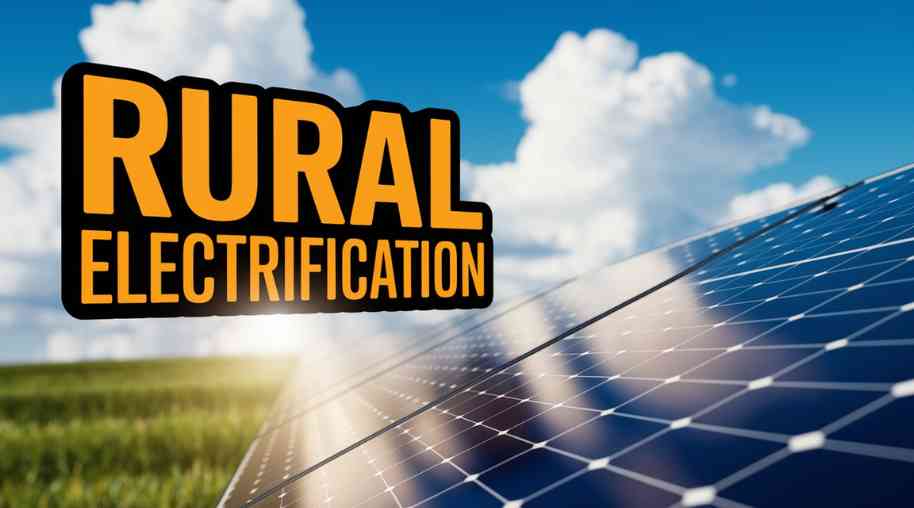REC Full Form-Rural Electrification Corporation
by Shashi Gaherwar
0 1008
Rural Electrification Corporation: Powering India's Development
Introduction
The Rural Electrification Corporation (REC) is a public sector enterprise under the Ministry of Power, Government of India. It plays a crucial role in financing and promoting rural electrification projects across the country. Established in 1969, REC has been instrumental in the implementation of various government schemes aimed at ensuring electricity reaches every corner of India. With its strategic focus on power sector financing, renewable energy projects, and infrastructure development, REC has contributed significantly to India’s electrification and economic growth.

This article explores the role, objectives, funding mechanisms, major initiatives, and impact of REC in India's power sector.
Objectives of Rural Electrification Corporation
REC aims to achieve the following objectives:
1. Electrification of Rural Areas – Ensuring every village and household in India has access to electricity.
2. Financing Power Infrastructure – Providing long-term financial assistance for power generation, transmission, and distribution projects.
3. Promoting Renewable Energy – Supporting clean and sustainable energy solutions such as solar, wind, and hydropower projects.
4. Implementation of Government Schemes – Facilitating the execution of initiatives like Saubhagya, Deen Dayal Upadhyaya Gram Jyoti Yojana (DDUGJY), and UDAY.
5. Strengthening Power Distribution Networks – Improving electricity supply infrastructure in both urban and rural areas.
Funding and Financial Assistance by REC
REC acts as a key financial institution for the power sector by providing:
1. Project Financing – REC extends loans to state electricity boards, power utilities, and private players to develop power infrastructure.
2. Transmission & Distribution Funding – Financing projects to strengthen the power grid and reduce transmission losses.
3. Renewable Energy Project Funding – Supporting green energy projects to reduce carbon emissions and promote sustainable growth.
4. Rural Electrification Loans – Offering affordable financing for village electrification and last-mile connectivity.
5. Smart Grid and Modernization – Funding initiatives aimed at improving power efficiency and smart metering.
Key Government Initiatives Supported by REC
REC plays a vital role in implementing flagship government schemes such as:
1. Saubhagya – Pradhan Mantri Sahaj Bijli Har Ghar Yojana
• Launched in 2017, this scheme aimed to provide electricity to all households.
• REC served as the nodal agency, ensuring smooth financing and execution.
2. Deen Dayal Upadhyaya Gram Jyoti Yojana (DDUGJY)
• Focuses on rural electrification and feeder separation for efficient power distribution.
• Strengthens substations, transformers, and power lines in rural areas.
3. UDAY – Ujwal DISCOM Assurance Yojana
• Aimed at financial restructuring of power distribution companies (DISCOMs).
• REC helped in disbursing loans to improve DISCOMs’ operational efficiency.
4. National Electricity Mobility Mission (NEMM)
• Supports the adoption of electric vehicles (EVs) and charging infrastructure.
• REC contributes to funding clean energy projects for sustainable transport.
Impact of REC on Rural Electrification
REC has significantly impacted India's rural electrification landscape in the following ways:
1. Increased Rural Electrification Coverage – Over 99% of Indian villages now have electricity.
2. Improved Power Quality – Reduction in power outages and better load management.
3. Boost to Economic Growth – Electrification has led to industrial growth, job creation, and improved agricultural productivity.
4. Support for Renewable Energy – REC’s funding of solar and wind power projects contributes to India's clean energy goals.
5. Enhanced Rural Development – Access to electricity has improved education, healthcare, and digital connectivity in villages.
Challenges Faced by REC
Despite its achievements, REC faces several challenges:
• Financial Stress on DISCOMs – Many power distribution companies struggle with debt and revenue losses.
• High Transmission Losses – Technical and commercial losses remain a concern.
• Slow Implementation of Projects – Bureaucratic delays affect rural electrification speed.
• Need for More Renewable Energy Investments – While progress is made, larger investments are required to meet India’s clean energy targets.
Future of REC and Rural Electrification in India
The future of REC looks promising, with a focus on:
• Expanding smart grid technologies to modernize power distribution.
• Increasing investments in green energy solutions for sustainability.
• Strengthening financial support for DISCOMs to enhance efficiency.
• Achieving 100% rural electrification with uninterrupted power supply.
The Rural Electrification Corporation (REC) has been a pillar of India's power sector growth, ensuring that electricity reaches every household and business. Through its financial assistance and government-backed schemes, REC has transformed India's rural landscape by enabling access to reliable and affordable electricity.
As India moves toward a sustainable and energy-secure future, REC will continue to play a crucial role in shaping the country’s power infrastructure, renewable energy transition, and rural development. Strengthening its financial position, adopting modern technologies, and prioritizing renewable energy will be key to REC’s long-term success in electrifying India.

Share:








Comments
Waiting for your comments